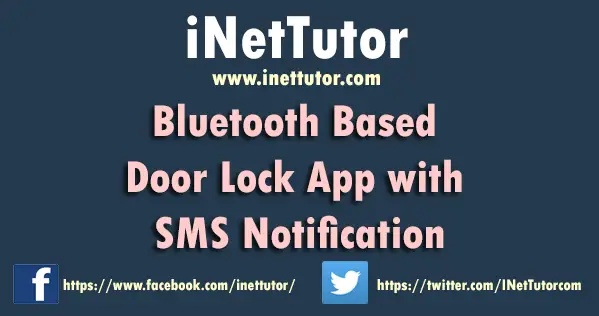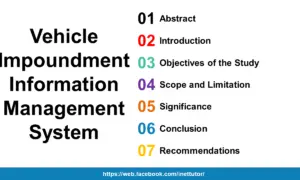Geographical Information Systems Project Ideas
Introduction
Table of Contents
Geographical Information Systems (GIS) are powerful tools that allow us to visualize, analyze, and interpret data related to the Earth’s surface. By mapping out various types of information, GIS helps us understand patterns, relationships, and trends that would be difficult to see otherwise. Whether it’s tracking the spread of diseases, managing natural resources, or planning urban developments, GIS plays a crucial role in decision-making across a wide range of fields.
In recent years, the demand for GIS in web and mobile applications has surged. This growth is driven by the need for real-time data and interactive maps that users can access from anywhere. From navigation apps like Google Maps to environmental monitoring platforms, GIS has become a key component in many modern technologies. As more industries recognize the value of geospatial data, the opportunities for GIS in app development continue to expand.
The purpose of this blog is to inspire developers who are interested in GIS by suggesting innovative project ideas that can be implemented on web and mobile platforms. Whether you’re a beginner or an experienced developer, these ideas can help you explore the potential of GIS in creating impactful and user-friendly applications.
The Basics of GIS
Geographical Information Systems (GIS) are powerful tools that allow us to analyze and understand spatial data. At its core, GIS combines maps with data, providing a visual representation of information that helps us make informed decisions. GIS consists of several key components, including data capture, storage, manipulation, analysis, and visualization.
In modern web and mobile app development, GIS plays a crucial role in enhancing the functionality and user experience. By integrating GIS capabilities into web and mobile applications, developers can create interactive maps, perform spatial analysis, and provide location-based services. This integration allows users to access and interact with GIS data in a user-friendly and accessible manner.
There are several popular GIS applications that demonstrate the power and versatility of GIS in web and mobile app development. Google Maps is a widely used mapping application that provides real-time navigation, location search, and street view. ArcGIS Online, developed by Esri, is a comprehensive GIS platform that offers a wide range of tools and services for creating and sharing maps and spatial data. Leaflet is an open-source JavaScript library that allows developers to build interactive maps and integrate them into web applications.
By leveraging GIS technologies in web and mobile app development, developers can unlock the potential of spatial data and create innovative solutions that address real-world challenges. Whether it’s optimizing transportation routes, tracking real-time locations, or analyzing environmental data, GIS provides a powerful framework for building impactful applications.
Water Refilling System with Online Ordering and Mapping System
GIS Project Ideas
Community and Urban Planning
- Real-time Public Transportation Mapping
- Develop an app that displays live locations of buses and trains, allowing users to plan routes with real-time traffic and schedule updates. This could include features like estimated arrival times, alternative route suggestions during delays, and notifications for service disruptions.
- Smart City Initiatives
- Create applications that support smart city projects by integrating GIS with services like waste management, parking availability, air quality monitoring, and noise pollution mapping. These apps can provide residents with real-time updates and allow city officials to optimize resource allocation.
- Disaster Management
- Build tools that assist in disaster management by offering features like evacuation route planning, damage assessment mapping, and resource allocation. These tools can be crucial in preparing for and responding to natural disasters such as floods, earthquakes, and hurricanes.
- Urban Green Space Analysis
- Design a platform that maps and analyzes urban parks and green spaces. The app could assess the accessibility of these spaces to residents, identify gaps in green space distribution, and help city planners improve urban sustainability.
Environmental and Sustainability
- Environmental Monitoring
- Create an application that tracks environmental changes such as deforestation, pollution levels, and climate change impacts. The app can integrate satellite imagery, real-time data feeds, and analytics to help organizations and governments monitor and mitigate environmental degradation.
- Wildlife Conservation
- Develop a tool for tracking wildlife movements, mapping habitats, and supporting citizen science projects. Users could contribute data on wildlife sightings, which can be used to monitor species populations and protect endangered habitats.
- Sustainable Agriculture
- Build a mobile app that assists farmers with soil analysis, crop monitoring, and precision agriculture. By integrating GIS with sensor data and satellite imagery, the app can provide farmers with actionable insights to optimize crop yields and reduce environmental impact.
- Renewable Energy Site Selection
- Design a GIS-based platform that identifies optimal locations for renewable energy projects like solar, wind, and hydro power. The app can analyze factors such as sunlight, wind patterns, and proximity to infrastructure to help developers choose the best sites for sustainable energy production.
Business and Commerce
- Location-Based Marketing
- Develop an app that allows businesses to target customers based on their location and preferences. By using GIS data, companies can send personalized promotions and offers to customers when they are near a store or within a specific geographic area.
- Logistics and Delivery Optimization
- Create a tool that improves route planning and delivery efficiency for logistics companies. The app can optimize routes based on traffic conditions, delivery priorities, and driver safety, helping to reduce fuel costs and delivery times.
- Real Estate Analysis
- Build a platform that provides property information, market trends, and neighborhood insights. Real estate agents and buyers can use the app to explore potential properties, assess market conditions, and make informed decisions based on location data.
- Field Service Management
- Develop an application that optimizes work orders, technician routing, and asset management for businesses with field services. GIS can be used to schedule and dispatch technicians more efficiently, track assets, and ensure timely maintenance and repairs.
Health and Social Services
- Disease Outbreak Monitoring
- Create an app that tracks and visualizes the spread of diseases. The platform could use GIS to analyze patterns, predict outbreak hotspots, and provide public health officials with tools to manage and control the spread of infectious diseases.
- Healthcare Facility Location
- Design a tool that analyzes the distribution of healthcare facilities and identifies underserved areas. The app could help government agencies and healthcare providers plan new facilities or expand services to ensure equitable access to healthcare.
- Emergency Response
- Build a mobile application for first responders to locate incidents, access relevant data, and coordinate their efforts. GIS can provide real-time maps, hazard assessments, and resource tracking to enhance the effectiveness of emergency responses.
- Social Services Planning
- Develop a platform that helps social service organizations identify areas with high needs and allocate resources more effectively. The app could map socioeconomic data, track service usage, and assist in planning outreach and support programs.
Getting Started with Your GIS Project
Data Sources and Acquisition
The foundation of any GIS project lies in acquiring accurate and relevant data. There are several sources where you can obtain geospatial data:
- Open Data Platforms: Websites like OpenStreetMap, NASA Earth Data, and governmental open data portals provide access to a wealth of freely available geospatial data, including maps, satellite imagery, and environmental information.
- Government Agencies: National and local government agencies often provide detailed GIS data on topics such as land use, transportation networks, and demographic information. These datasets are typically reliable and regularly updated.
- Crowdsourcing: Engaging the community to collect and contribute data can be a powerful approach, especially for projects like mapping public services or monitoring environmental changes. Platforms like Google Maps and OpenStreetMap allow users to submit real-time updates and corrections.
Project Planning and Development Process
Starting a GIS project requires careful planning to ensure its success. Begin by clearly defining your project’s objectives and identifying the key features and functionalities that you want to include. This will help you determine the type of data you need and the tools or technologies you’ll use. Create a project timeline with milestones to keep track of your progress and ensure that all tasks are completed on schedule.
Next, choose the appropriate GIS tools and platforms for your project. Depending on your needs, you might use web-based GIS tools like Leaflet or Mapbox, or mobile development platforms like React Native with GIS integration. During development, prioritize scalability and performance, especially if your project will handle large datasets or require real-time updates.
Tips for Collaboration and Teamwork
Collaboration is often essential in GIS projects, as they can involve various experts such as developers, data analysts, and subject matter specialists. To ensure effective teamwork:
- Use Version Control: Platforms like GitHub or GitLab allow multiple team members to work on the project simultaneously, track changes, and manage contributions efficiently.
- Regular Communication: Establish regular meetings and communication channels (e.g., Slack, Microsoft Teams) to discuss progress, share insights, and address any challenges.
- Define Roles and Responsibilities: Clearly outline each team member’s role in the project to avoid overlaps and ensure that everyone is working towards the same goals.
Importance of User Testing and Feedback
User testing is crucial to the success of your GIS project. Before launching your application, conduct thorough testing with real users to identify any issues with usability, functionality, or performance. This can be done through beta testing, where a select group of users tries out the app and provides feedback.
Gathering feedback early and often helps you make necessary adjustments and improvements, ensuring that the final product meets the needs of your target audience. Consider incorporating feedback loops even after the project is launched, allowing for ongoing updates and enhancements based on user experiences. This approach will help your GIS project remain relevant and effective in the long term.
Conclusion
Geographical Information Systems (GIS) hold immense potential in transforming web and mobile development. By integrating spatial data and mapping tools, developers can create innovative applications that address real-world challenges across various sectors, from urban planning to environmental conservation. The flexibility and power of GIS make it an essential tool for building applications that not only visualize data but also provide actionable insights.
As the demand for location-based services continues to grow, now is the perfect time to explore and innovate in the field of GIS. Whether you’re new to GIS or an experienced developer, the possibilities are vast, and the impact of your work can be significant. By experimenting with different data sources, tools, and project ideas, you can develop unique solutions that meet the needs of users and make a difference in your community or industry.
So, don’t wait—start building your GIS project today. Dive into the available resources, gather your data, and begin creating applications that harness the power of geospatial information. The field of GIS is ripe with opportunities, and your contributions could be the next big step in advancing how we understand and interact with the world around us.
Readers are also interested in:
You may visit our Facebook page for more information, inquiries, and comments. Please subscribe also to our YouTube Channel to receive free capstone projects resources and computer programming tutorials.
Hire our team to do the project.


